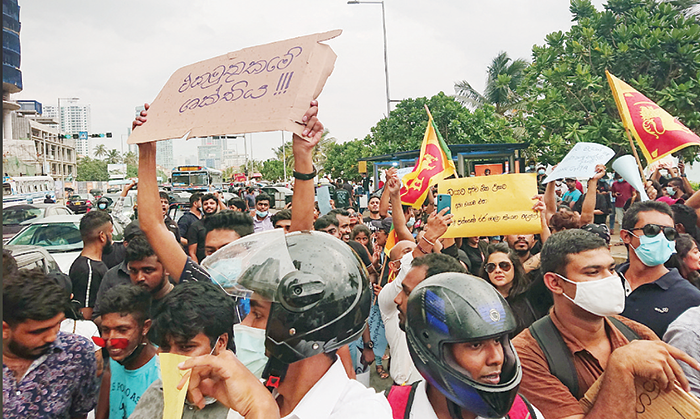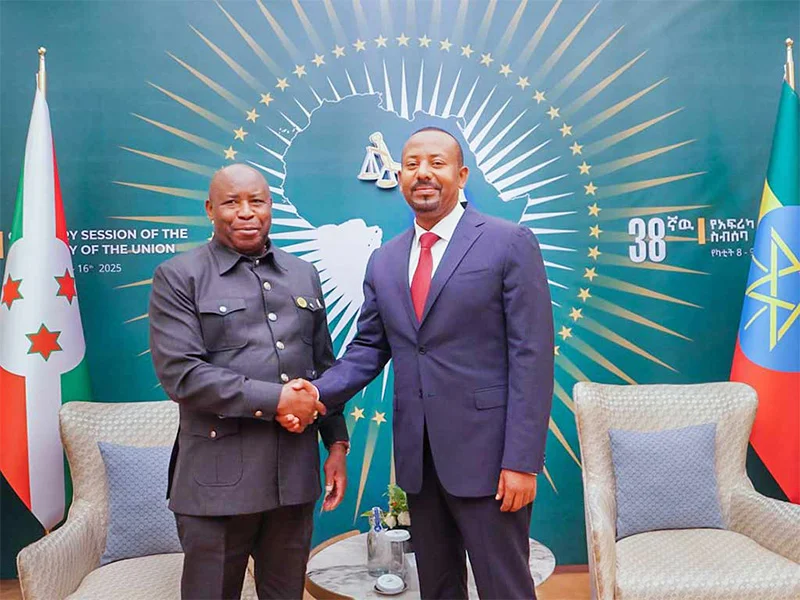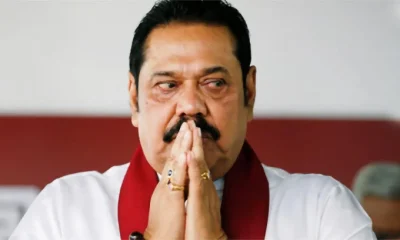Features
Digging into the politics of dissent

By Uditha Devapriya
Sri Lanka is a fractured state, divided along ethnic, economic, and ideological lines. It has seen its share of civil wars, insurrections, and pogroms. It has tried to learn the lessons of the past, only to fail miserably. It has tried to look to the future, but is yet to embrace it. What it will become eventually, no one knows. To pontificate on Sri Lanka is to speculate not just about what it has to turn to, but what it is now. An optimist will see it as a mosaic, a kaleidoscope. A cynic will see it as a divided country. That’s probably the cruellest irony: an island held together by groups at perpetual war with one another.
Yet commentators who depict the country as an “orientalist powder keg”, as Shiran Illanperuma memorably put it once, overlook its achievements, particularly those from the more recent past. Despite living under a succession of authoritarian regimes, people have exercised their will, turning out one government after another in record time. At times of crisis they have got together, rallying around a common cause. The most recent such cause, of course, was the resignation and removal of a deeply unpopular president. That he has been replaced by a man seen as a front for the family of the president they chased out has not deterred Sri Lankans from asking for further reforms.
I believe that when analysing the situation in Sri Lanka – not just the crisis, but any future development – we need to understand that while common causes bind people in their calls for these reforms, there are important differences that set some groups apart from others. Everyone wants change, but – and this is a point rarely acknowledged or appreciated – what change means can differ from person to person, or from class to class. This explains the lull among middle-class protesters after Gotabaya Rajapaksa’s exit on July 13 and the continuing agitation among student and Left activists. Such cleavages should not be ignored, much less trivialised. They need to be understood in all their complexity.
Popular uprisings against the establishment are made up of different interests and interest groups. They have different goals, and even if they share those goals with other groups, they seek to achieve them with different strategies and envision different outcomes. Sometimes these interests converge well, as when, in early May, trade unions promised an island-wide and indefinite strike and then backtracked on it with the excuse that if sectors like electricity and water went out of service, the protesters would be adversely affected. There was some solidarity there. But such dalliances are rare and temporary. We are living through what one could not have foreseen then: the fragmentation of these groups.
Such developments are hardly unique to Sri Lanka, or to contemporary social movements. China Miéville’s account of the October Revolution (October: The Story of the Russian Revolution, 2017, Verso) explains succinctly the fissures which emerged in the aftermath of the 20th century’s biggest anti-State uprising. These fissures never unified into a cohesive whole: that is why his ability to forge some unity makes Lenin one of the great political strategists of modern history. Yet the Russian Revolution required a Lenin to achieve some degree of unity. Sri Lanka as yet lacks such figures: they are nowhere to be found. What this means is that social movements here oscillate between superficial unity and underlying disunities, the protests at Gotagogama being perhaps the clearest example.
These disunities include a number of variables and factors, and are highly nuanced. Some, like political preferences, are obvious enough: if you want the UNP or the JVP come to power, you will go quiet – as most UNP supporters have now – when your preferred party takes over the government. Others, like cultural, religious, and social prejudices, are less clear, but are still evident if you look closely enough. Western commentators who wrote admiringly of the protesters’ commemoration of the war, of how the underlying attitude regarding May 18 had changed from uncritical celebration to sober reflection, failed to note that there was a group celebrating the war and demonising Rajapaksa for having betrayed the mandate that the war victory gave him and his family. What was being condemned here was not the war itself, but the distortion of it by the ruling political class.
Here we need to understand that the recent protests were unprecedented in the country’s history of protests and mass movements. Mark Beissinger of Princeton University has done some interesting research into modern urban civic revolutions. In The Revolutionary City: Urbanization and the Global Transformation of Rebellion (2022, Princeton University Press), he points out that the mood and tenor of such movements have changed since the 1990s, with the collapse of the Soviet Union. While common interests do bring people of all shades and from walks of life to such movements, to the city – which has immense symbolic value for anti-government protesters – not all these interests are moved by democratic impulses. Civic though these movements are, they cannot be squared with narratives that depict them as being moved by liberal concerns. This is true of the Gotagogama protests.
Arguably the most important point Beissinger makes in his book is that revolutions do not necessarily bring about what they seek to construct or reform. More often than not, such movements focus on movements and institutions, rather than systemic changes. What this means is that whoever comes to power in the wake of urban civic uprisings are compelled, whether against their better interests or not, to work with the same establishment and set-up that his or her predecessor – the target of the uprising – worked with. This forces them into an alliance with groups which were heavily associated with that predecessor, thereby entrenching the State. We are living through such a phase now, here. While the protests have fragmented into a plethora of interest groups, the State still has and wields the upper hand: as it did in the Philippines after Marcos, and Egypt after Mubarak.
Features
Africa gaining ground in intra-regional cooperation

 At a time when the US is veering towards a policy of international isolation, it augurs well for international growth that Africa is emanating signs of stepping up intra-continental cooperation. Above all, Africa is in the process of proving that she could ‘stand-alone’ and be relatively autonomous in her ground-breaking growth drive.
At a time when the US is veering towards a policy of international isolation, it augurs well for international growth that Africa is emanating signs of stepping up intra-continental cooperation. Above all, Africa is in the process of proving that she could ‘stand-alone’ and be relatively autonomous in her ground-breaking growth drive.
Of course such epochal developments should not be construed as meaning that Africa would sooner rather than later be rid of the socio-political and economic bottlenecks that have been dogging her at heel for decades. What they mean is that she is managing these problems in a consistently constructive fashion currently.
We in South Asia in particular need to take note of these developments. This is mainly in view of the fact that SAARC is non-functional. It is not ‘dead’, as a former President of Sri Lanka tried to have us believe, but its virtual paralytic state at present should have discerning sections in the region concerned. It is robust regional cooperation in the fields that matter that helps a country in its growth and development and if SAARC is dysfunctional this is a serious setback for Sri Lanka and the region.
Closer integration into BIMSTEC and ASEAN is certainly desirable but if governments are having Sri Lanka’s best interests at heart it is primarily to the SAARC region that they need to look. For instance, how Sri Lanka is hoping to further its growth prospects by not factoring in stepped-up and positive economic interaction with India and Pakistan, for example, is incomprehensible.
There is a strong regional dimension to any country’s economic growth and unless the relevant regional cooperative mechanisms are rendered operational, the desired level of national development could not be achieved in full. Hence the need to render SAARC fully operational once again.
However, unless and until governments of the region realize the urgency of meeting the above challenge, SAARC would remain in a state inertia. The pressing need is visionary political leadership at the regional level. Right now this is seriously lacking.
It would seem inappropriate and misleading at first blush to attempt to draw comparisons between the vast continent of Africa and the South Asian region in view of the latter’s comparative geographical smallness, but this is more so why Africa’s present exercises in intra-continental cooperation need to be positivey assessed. If Africa could be making some headway in intra-regional cooperation, given her ‘Giant’ status and her seeming unmanageability as a collectivity, why can’t South Asia, a comparatively physically small region? ‘This is the Question’.
While the above and connected matters of importance for regional growth need to be seriously studied by political leaders and policymakers of South Asia, they would be acting in the regional interest by taking a leaf or two out of Africa’s book of cooperative growth and development.
All watchers of international development should feel compelled to take a hard, discerning look at the 38th African Union (AU) Summit held in Addis Ababa, beginning February 15th this year. Interestingly, the Summit theme was, ‘Justice for Africans and People of African Descent through Reparations.’
Coincidentally, erstwhile Namibian leader Dr. Sam Nujoma passed away on the eve of the Summit. Nujoma was perhaps the last of those prominent leaders from Africa who doggedly championed the cause of the libration of his country and of the continent from the shackles of colonialism. More leaders of his ilk are required by the South in general and Africa in particular.
While the acquiring of ‘reparations’ for colonialism’s ravages could prove a very long-gestation project, it is vitally important for Africa and other regions that came under colonial control to keep the issue constantly in focus.
Meanwhile, Africa’s gains in economic cooperation under the AU need to be studied appreciatively by the South and other regions in their interests. Some of the achievements of the AU under the aegis of the African Development Bank (ADB), as outlined by outgoing president of the Bank, Dr. Akinwumi A. Adesina at the Summit were: ‘515 million African lives were transformed over the past decade, including 231 million women, 127 million people gained access to better services in terms of health, 61 million people gained access to clean water, 33 million people benefited from improved sanitation, 46 million people gained access to ICT services, 25 million people gained access to electricity.’
Reports said that the Summit also, among other things, adopted the ‘African Financing Stability Mechanism’. Under this arrangement, $20 billion in debt refinancing will be provided for African nations. This will happen alongside the adoption of the ‘Strategic Framework on Key Actions to Achieve Inclusive Growth and Sustainable Development in Africa Report’.
The Report outlines key actions for Africa to ‘Achieve and sustain an annual growth rate of at least 7% of GDP over the next 5 decades.’
The above are a few aims that the AU intends to achieve going forward for the whole of Africa. But they are sufficient evidence of the current effectiveness of the collective organization. We see here a notable example in South-South cooperation which is a dire need today in the developing world.
South-South cooperation is the way to go particularly in consideration of the US’ current policy of virtually ridding itself of the past policy of helping the South by way of development assistance. Instead of bemoaning the fact that institutions, such as USAID, will be almost no more, the South would do well to take a hard look at Africa’s success stories in helping itself with little or no external assistance.
The discontinuation of US assistance needs to be seen as the proverbial ‘blessing in disguise’ by the South. Here is an opportunity for the Southern hemisphere to finally rid itself of those neo-colonial umbilical binds that have been preventing it from achieving genuine national liberation.
To be sure, the South is not going to meet with spectacular success by adopting the African model in the near term. But if the model is doggedly persisted with by enlightened governments of the South some success is certain to accure to the hitherto ‘Wretched of the Earth’, going forward.
Features
Mrs. World Tshego Gaelae …doing it differently

While most of our pageant winners get involved in frivolous activities, during their reign, the 40th Mrs. World pageant winner, Tshego Gaelae, from South Africa, is keen to bring into the spotlight her country’s potential.
Before her departure for the Mrs. World pageant, held in Las Vegas, in the USA, in January, the Lawyer, Entrepreneur, Model and Digital Creator, said:
“I’m so excited to be sent not only as a delegate but a representative of those hopeful hearts that always want to see South Africa’s potential shine and win. I stand on the shoulders of icons, world champions, the Queens that have gone ahead of me, and of the world leaders that continue to ensure our global participation and impact.
“Thank you everyone for the support so far!”

A coke and a smile…with Sprite Cucumber her pick
Referring to the interview for the position of Mrs. World, Gaelae said: “We get to bring our most authentic self to advocate for the causes we want to advance through the most prestigious platform that is the Mrs World Pageant. What an honour to have such experienced judges who care to hear about what I want to achieve.”
The lead up to the prestigious Mrs. World event was doubly exciting for Gaelae as she got the opportunity to display not only her country’s creations but also check out certain nostalgic venues.
“We received the honour of being at the Elvis penthouse suite, at the Westgate Vegas! The space is spectacularly filled with iconic and historic presence, fit for the king that was Elvis Presley.”
The Mrs World participants spent an evening honouring Victoria’s Voice Foundation and Gaelae’s gift to the Foundation was a canvas shirt with President Nelson Mandela’s face printed on it. The shirt can either be worn or displayed in a frame, and Gaelae says she is so glad to have had the opportunity to present a piece of her beloved South Africa.”

The bangles she gifted to all the participants at the Mrs. World pageant
Gaelae went on to say: “I always joke about being Zulu in my past life, but on a serious note, I love the Zulu Culture so much, that I gifted my Mrs. World Pageant Sisters some beautiful bangles.”
They also visited the special Coca-Cola Store in Vegas, and got to taste some interesting flavours. And Gaelae’s pick … “Sprite Cucumber definitely wins for me.”
Mrs. World enthusiastically said that one of the biggest gifts she received out of her Mrs South Africa journey was that of sisterhood, “and it’s so amazing to come to the Mrs. World pageant and find it once again,” she went on to say.
“My roommate was the gorgeous Ishadi Amanda from Sri Lanka! We bonded with no delay, and laughed till we cried! I was literally paired with a sister from another mother.”
Tshego Gaelae also had a special comment to make regarding the article we published about her in The Island of 6th February, 2025.
“Thank you so much for the beautiful article and coverage.”
Features
Activate all that is good for your skin

 Hi! This week, too, I’m giving you some easy to prepare tips to help you achieve all that is good for your skin.
Hi! This week, too, I’m giving you some easy to prepare tips to help you achieve all that is good for your skin.
* Cucumber and Lemon:
Mix equal parts cucumber and lemon juice and apply the mixture on your face (avoiding eyes). Allow it to sit for 10 minutes and then rinse it off. This natural face beauty tip will brighten your skin tone and lighten blemishes, if used on a regular basis. The best aspect is that it is appropriate for all skin types!
* Tomatoes:
Scoop up the pulp of one tomato and apply it evenly on your face. Allow it to dry for 15 minutes before washing it off with warm water … to reveal a naturally radiant skin.
* Green Tea:
After steeping green tea in hot water for about 05 minutes, allow the tea to cool. Transfer the tea to a spray bottle and spray, in short bursts, or place a little amount onto a cotton pad and pat on your face after thoroughly cleaning it.
* Chilled Tea Bags:
A chilled black or green tea bag does wonders for your skin. This natural face beauty technique may rapidly reduce puffiness around the eyes, making them appear brighter and more alert. Place the tea bags on your eyelids and relax for 05 to 15 minutes while they perform their magic.
* Honey:
Applying a small amount of honey to your face every day is an excellent approach to getting healthy, bright skin. Honey’s absorbing properties draw out pollutants from skin pores and help completely cleanse your skin. Honey’s antibacterial effects heal and prevent acne. Honey’s antimicrobial qualities soothe skin irritation and protect skin from bacterial infections. Honey, has remarkable moisturising effects and is also a terrific relief for dry skin.
* Coffee:
Exfoliating on a regular basis improves the appearance of your skin, making it look younger and healthier. For those who enjoy coffee, a homemade coffee scrub is all the weekly nourishment your skin requires. Coffee’s anti-inflammatory qualities minimize redness, irritation, and acne. All you need to do is mix freshly ground coffee beans, coconut oil, and brown sugar to your desired consistency in a bowl. Massage gently in circular strokes over your face, then rinse with warm water. After using an exfoliant, always moisturise.
-

 Sports5 days ago
Sports5 days agoRemarkable turnaround for Sri Lanka’s ODI team
-

 Business5 days ago
Business5 days agoUN Global Compact Network Sri Lanka: Empowering Businesses to Lead Sustainability in 2025 & Beyond
-

 Features5 days ago
Features5 days agoScammed and Stranded: The Dark Side of Sri Lanka’s Migration Industry
-

 News6 days ago
News6 days agoSpeaker agrees to probe allegations of ‘unethical funding’ by USAID
-

 Features4 days ago
Features4 days agoDon’t betray baiyas who voted you into power for lack of better alternative: a helpful warning to NPP – II
-

 Features4 days ago
Features4 days agoTwo films and comments
-

 Features7 days ago
Features7 days agoClean Sri Lanka and Noise Pollution (Part II)
-

 Editorial6 days ago
Editorial6 days agoCoal giant awakes, but uncertainty prevails











